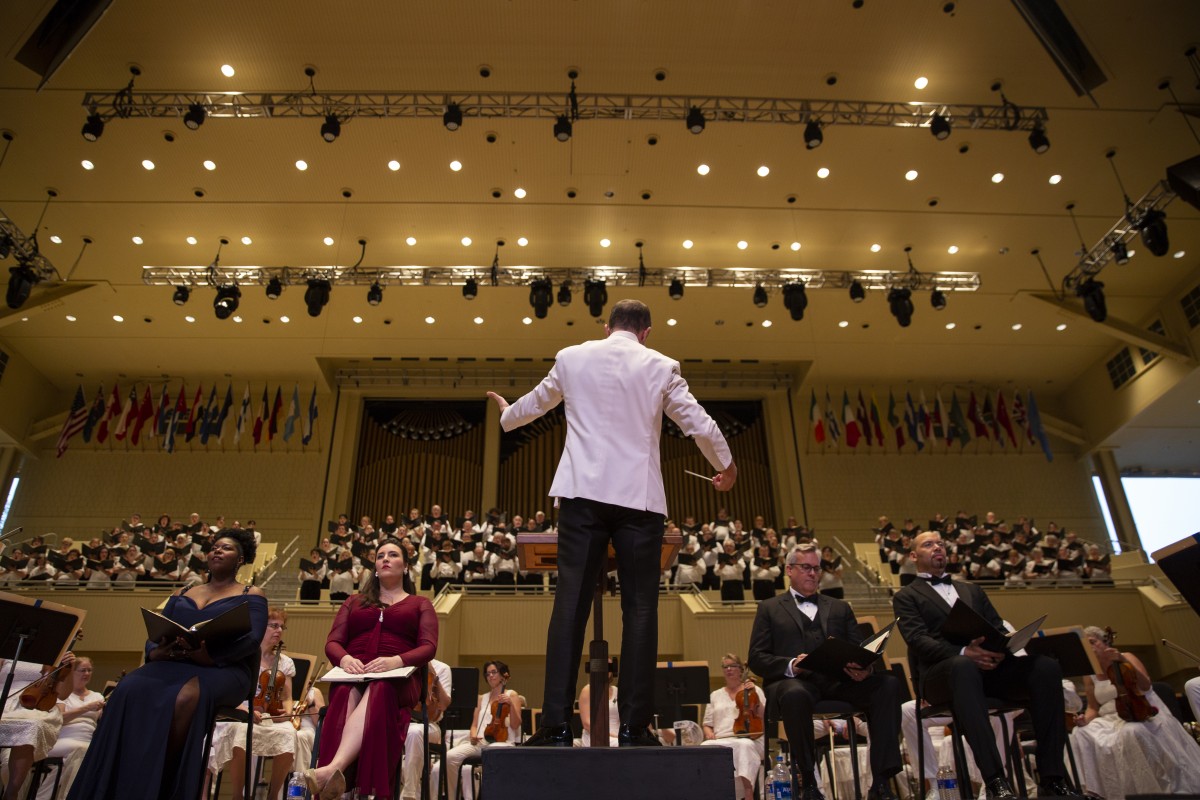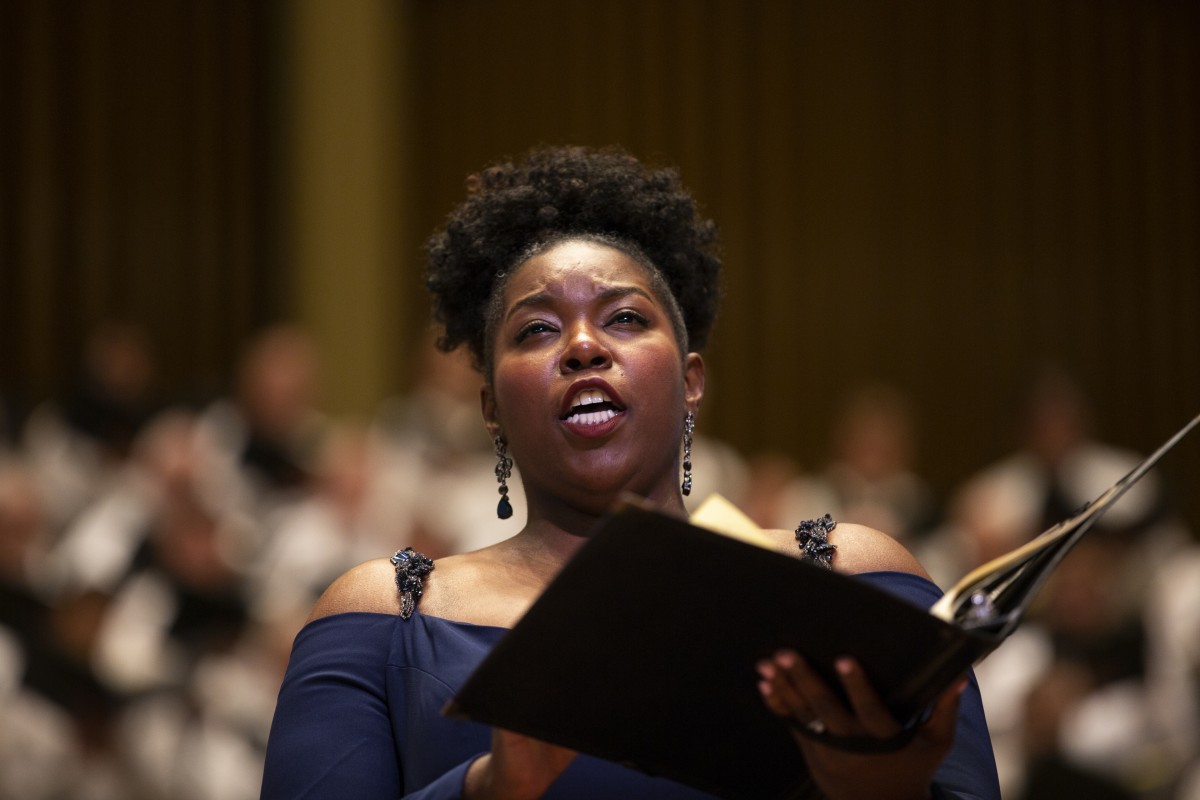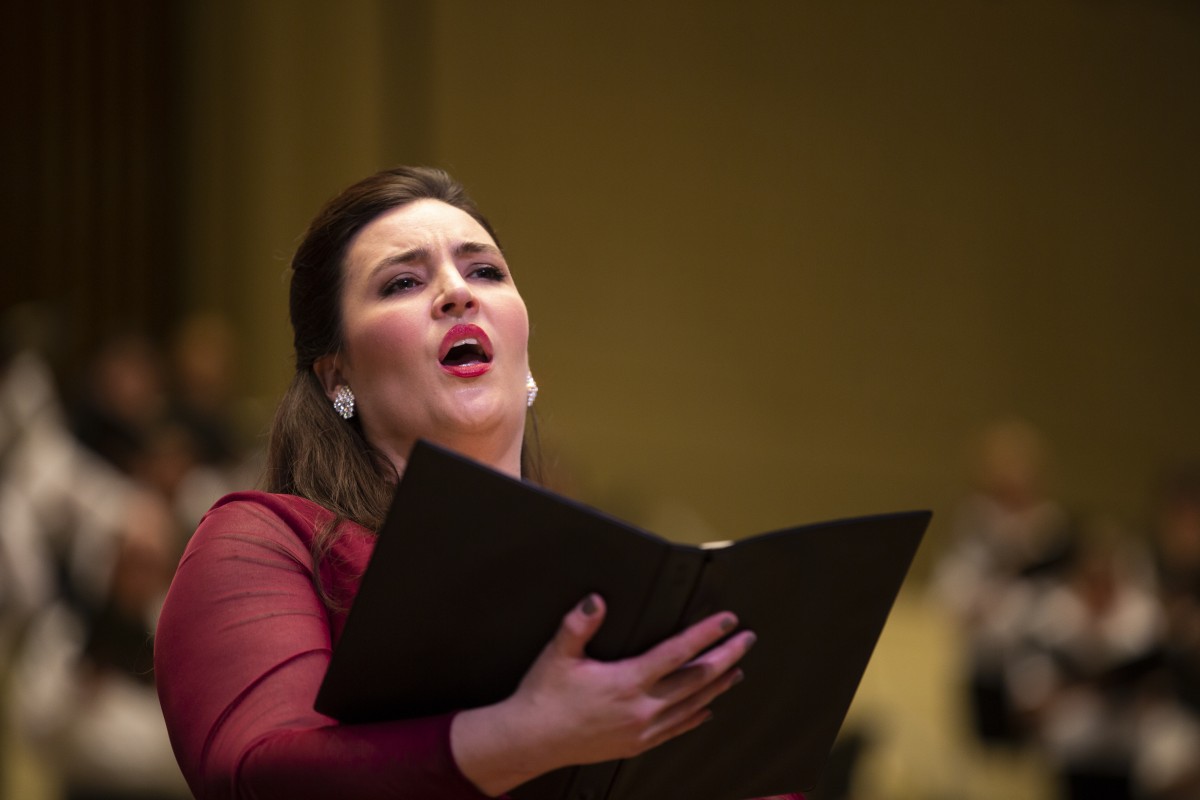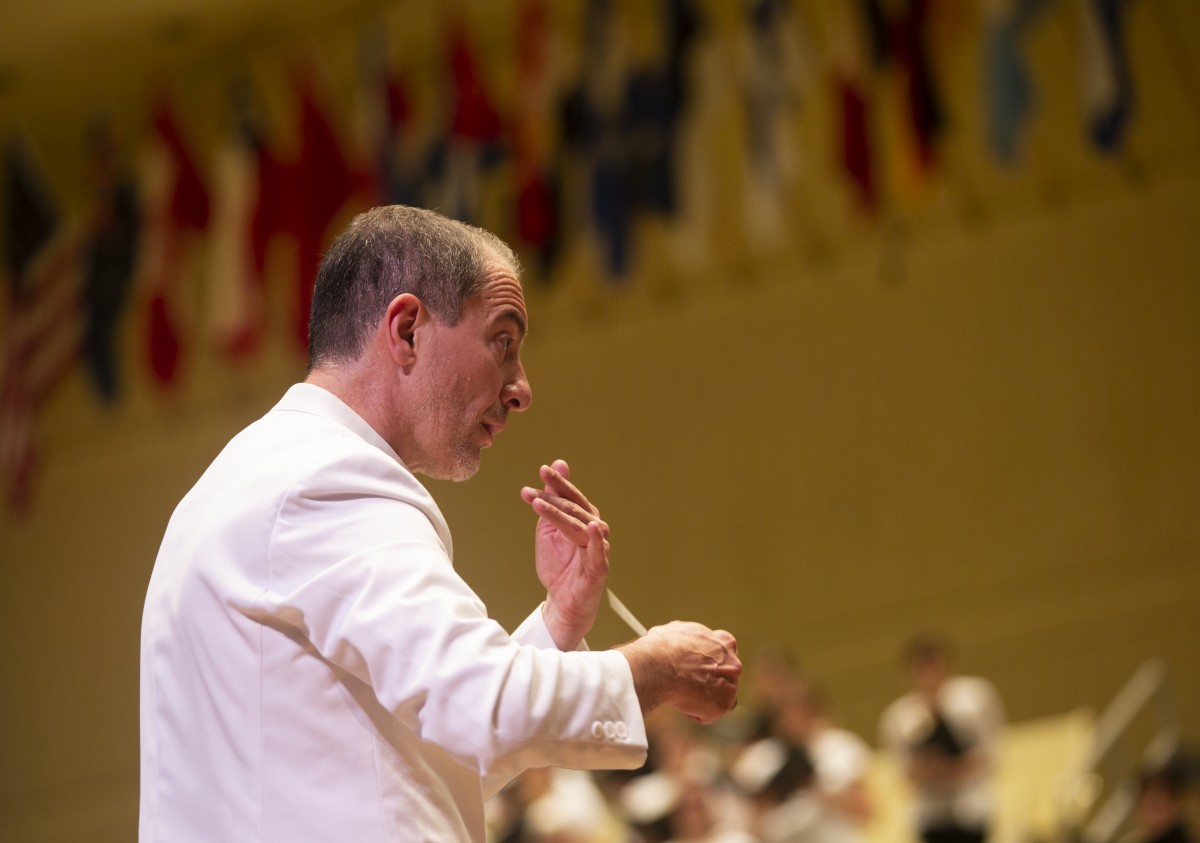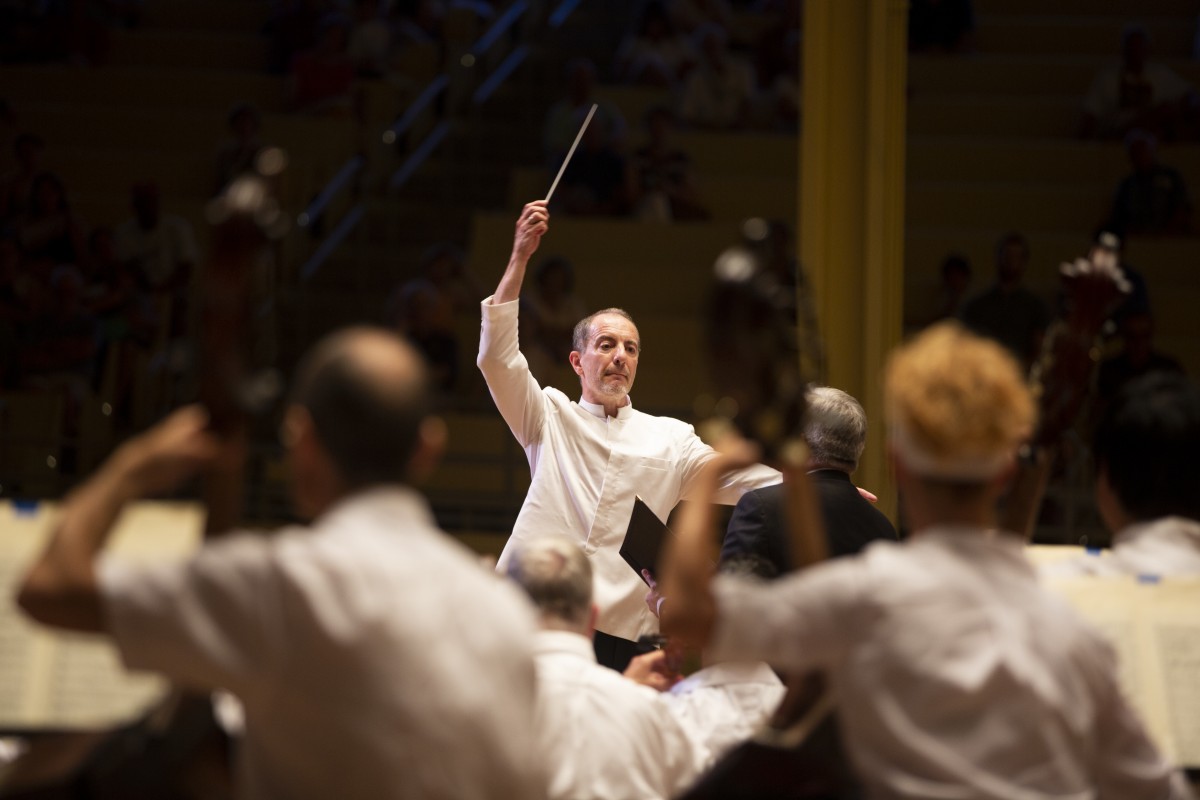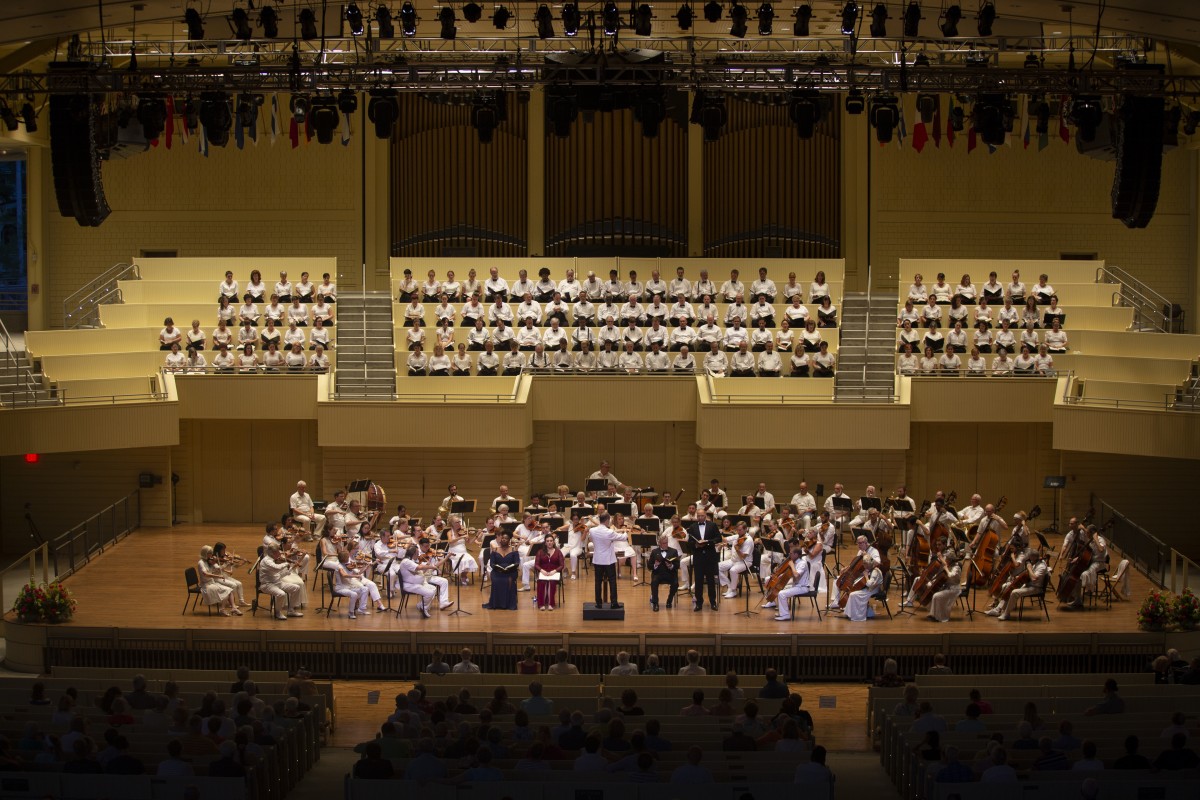Review by Andrew Druckenbrod
Next time you are telling ghost stories around the camp fire, try intoning the “Dies irae,” even if you are loose with the translation: “Day of wrath … the world in ashes … great tremors … when the Judge comes … strictly judging all.” Follow it up with a recording of Verdi’s harrowing treatment of this medieval Latin hymn in his Messa da Requiem, and everyone will sleep with flashlights on.
Put it on stage, with full chorus, soloists and orchestra, and you have a tour de force beloved by audiences since its premiere in 1874 in Milan. At the Amphitheater Saturday night on June 30, conductor Rossen Milanov invited the Buffalo Philharmonic Chorus and four soloists to join the Chautauqua Symphony Orchestra in what was an artistic triumph.
Although the dramatic nature of Verdi’s setting of the Day of Judgment, with thundering bass drum underpinning a searing orchestra and deafening chorus, the redemptive joy of the Catholic mass for the dead inspired him to write much delicate and even rapturous music. The complexity is a challenge that could scare any conductor. But Milanov masterfully balanced the performing forces, symphonic textures and contrasting emotions.
Calling for scarcely audible strings and a whispering chorus, he sent the message from the outset that no aspect of the score would be sacrificed due to the festive atmosphere or steamy weather. Prepared by music director Adam Luebke, the choir sang with warm tone and superb blend. While the Requiem would fit quite well in most of Verdi’s operas, an operatic approach would struggle to bring out its nuances, which the smoothness of this chorus captured throughout. From the tenderness of the “Lacrymosa” to the stoutness of the “Sanctus” to the cohesion of the “Agnus Dei,” the chorus showed it is in top shape. Sectional singing in contrapuntal areas also impressed.
The soloists each had their moments, although tenor William Burden’s piquant, yet graceful voice (with swelling woodwinds combining to create a glorious “Ingemisco,”) and mezzo-soprano Leah de Gruyl’s sonorous, yet vigorous, phrasing stood out. Bass Kevin Thompson and soprano Michelle Johnson had issues projecting in their lower ranges, though Thompson’s oaken timbre resonated powerfully most of the time.
It is always interesting where a conductor will put the four “offstage” trumpets in the “Tuba Mirum.” Milanov had the two pairs nearly beyond the overhang of the roof on opposite sides of the chorus to great effect. He again displayed sensitivity in crafting lighter sections, and the tutti sections were clear from top to bottom. It was an impressive performance, and it was fantastic to hear that the new Amp can handle such intricate music, with brass, woodwinds, strings and singers in wonderful cohesion.
Guest Critic Andrew Druckenbrod is a lecturer in the Department of Music at the University of Pittsburgh and former classical music critic of the Pittsburgh Post-Gazette.


